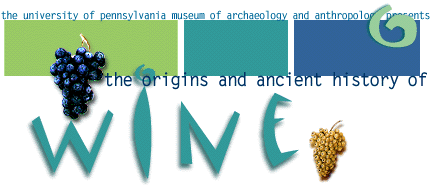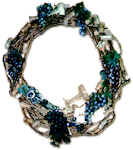 |
|||
 Wine "wreath" hanging in Dr. Patrick McGovern's one of a kind Archaeological Chemistry laboratory. |
|
C
o n t e n t s :
|
|
One
of a Kind Laboratory
Ancient
Evidence; Modern Technology
Archaeological Chemistry has come of age in the last twenty years. Ancient foods, perfumes, dyes, and other organics—which could only be imagined from ancient writings—are now routinely detected by highly sensitive instruments in the laboratory. Whole new chapters relating to our human ancestry and genetic development, cuisine, and medical practice are opening up. The Museum's Archaeological Chemistry Laboratory, developed under the leadership of Dr. Patrick McGovern, is a state-of-the-art facility. No other museum-based research lab of its kind exists in the United States. Beginning with the chemical identification of the earliest Royal Purple, the famous dye of the Phoenicians, the lab has gone on to develop techniques for identifying fermented beverages: barley beer, honey mead, and of course, the earliest grape wine. The museum of the future has much to gain from this rapidly developing field. Non-destructive analysis of skeletal material, botanical remains, and residues inside pottery vessels will shed light on human biocultural and technological development—from the past and for the future. |
|
|
|
|
|
|